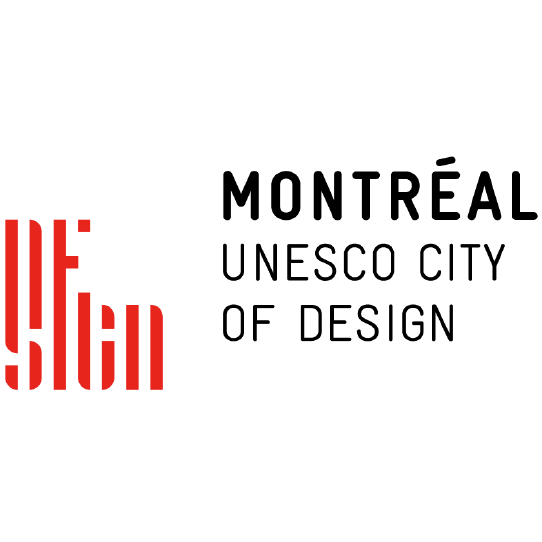
Tel : 514 872-8076
E-mail : designmontreal@montreal.ca
Founded in 1642, Montréal is the world’s 2nd-largest French-speaking city, and with around 1,900,000 inhabitants, it is the largest metropolis in the province of Québec, Canada. The city, a 50-kilometer long island, is surrounded by the Saint Lawrence River, and is just 72 kilometers north from the United States of America border.
In 1991, Montréal became the first city in North America to create a design commissioner position, dedicated exclusively to the development and promotion of design as well as to raising awareness among private- and public-sector stakeholders of the benefits of good design. In June 2006, Montréal was named UNESCO City of Design, and became part of the UNESCO Creative Cities Network. In attributing that title, UNESCO acknowledged the city’s creative potential in design, based on the strong concentration of talent in the city as well as the sustained efforts put forward over the years by its public authorities to build on that strength of the new Montréal economy.
The designation has also spurred development of the design industry, improving access to public commissions for designers from here and elsewhere, and has unquestionably helped enhance Montréal’s international reputation, by emphasizing the talent and drive of Montréal designers in all disciplines.
Montréal is definitely a city of designers: over 25,000 professionals are working in this lively field that is responsible for 34% of the overall economic impact of the cultural sector. Strategies were developed through the years to highlight Montréal’s designation as a UNESCO City of Design, such as ensuring better recognition for designers, raising awareness of the talents of Montréal designers and architects, and developing their markets. Efforts to widen the use of design and architecture competitions have resulted in multiple calls to creative practitioners, aimed at increasing design quality for buildings and public spaces. Montréal is home to a host of renowned educational institutions, including some 20 college-level teaching institutions, two French-language and two English-language universities, and more than 50 research chairs, including the UNESCO Chair in Landscape and Environmental Design at Université de Montréal and four others with a design focus. With two of its universities in the world’s top 100 of the most recent QS World University Rankings, Montréal confirms its position as Canada’s hub for higher education. The city also boasts a significant number of venues for the presentation of design along with well-known organizations that highlight the creations of designers and architects from here and elsewhere. These include the Design Centre of Université du Québec à Montréal, the Canadian Centre for Architecture, the Montréal Museum of Fine Arts, as well as the Maison de l’architecture du Québec.